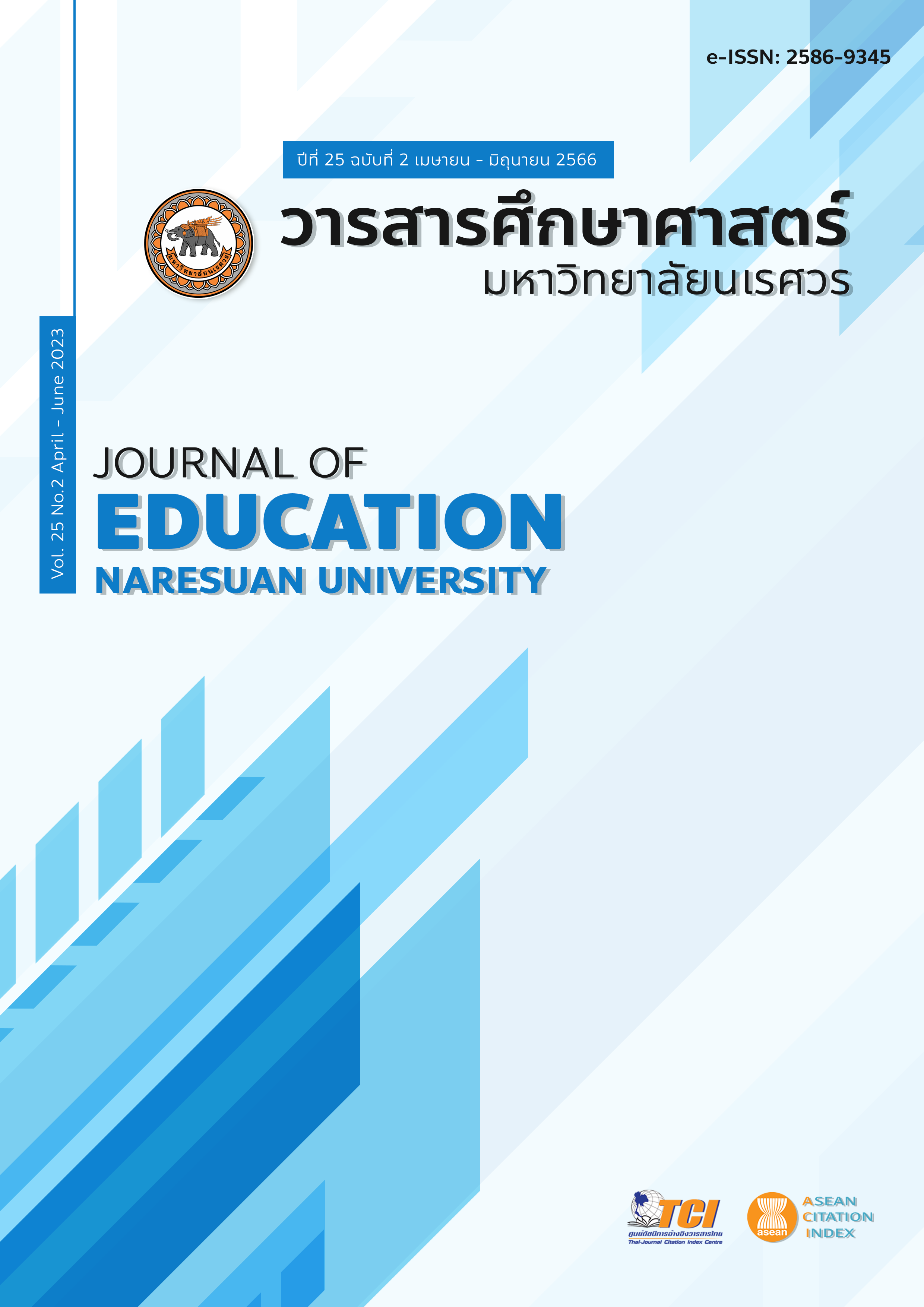THE DEVELOPMENT OF EXECUTIVE FUNCTION SCALE FOR NURSE STUDENTS การพัฒนาแบบวัดความสามารถคิดบริหารจัดการตน สำหรับนักศึกษาพยาบาล
Main Article Content
Abstract
The main purpose of this research aim to develop the executive function scale for nurse students with the specific purpose that including 1) to develop the executive function indicators and sub-indicators for nurse student, 2) to develop and investigate the content validity, discrimination, reliability as well as construct validity of executive function scale for nurse students, and 3) to develop the norms of executive function scale for nurse students. The sample of the study comprised 2,400 of nurse students from nursing college of the Praboromarajchanok Institute under the Ministry of Public Health by applying multi-stage sampling. The research instrument was the executive function scale. The data were analyzed by using median, interquartile range, Normalized T-score, correlation coefficient, t-test and confirmatory factor analysis. The research found that:
1. There were 9 indicators and 16 sub-indicators for executive function for nurse students. Their appropriateness was between a high level and the highest level.
2. There were 43 item of executive function scale for nurse students. It was characterized as a situation test. The questions were in a situational manner in the teaching and learning context for nursing students. There were four behavioral options. The criteria for scoring set between 1 – 4 points. The investigate content validity found that the item content validity index set between 0.89 – 1.00 and the content validity for scale was 0.98. The discrimination found that item were discrimination by analyzing t-test that could distinguish the low group and the high group was significant at level .05 and when analyzing with corrected item – total correlation (CITC). The discrimination was greater than 0.2 number of 43 items. In the term of reliability, the internal consistency of reliability method was examined using cronbach's alpha coefficient, which was found to be 0.936. In terms of construct validity, it was found that the executive function scale for nurse students correlated with empirical data and had constructed validity (Chi-square = 24.892, df = 15, p-value = 0.051 RMSEA = 0.033, CFI = 0.997 and SRMR = 0.013)
3. The norms for assessing of executive function scale for nurse students devided into 5 levels which were very high, with standard scores (Normalized T – score) greater than 65 and raw scores set between 157 – 172, High levels set standard scores (Normalized T-score) between 55 – 64 and raw scores between 137 – 156, Intermediate set standard scores (Normalized T-score) between 45 – 54 and raw scores between 117 – 136, Low scores set standard scores (Normalized T-score) between 35 – 44 and raw scores between 97 – 116, and very low level set standard scores (Normalized T-score) from 34 below and raw scores between 0 – 96.
Article Details

This work is licensed under a Creative Commons Attribution-NonCommercial-NoDerivatives 4.0 International License.
The owner of the article does not copy or violate any of its copyright. If any copyright infringement occurs or prosecution, in any case, the Editorial Board is not involved in all the rights to the owner of the article to be performed.
References
Alvarez, J. A., & Emory, E. (2006). Executive function and the frontal lobes: A meta-analytic review. Neuropsychology Review, 16(1), 17-42.
Anderson, V. (1998). Assessing executive functions in children: Biological, psychological, and developmental considerations. Neuropsychological Rehabilitation, 8(3), 319-349.
Boonruengrat, S. (2007). Normalized T score. Encyclopedia of Education Faculty of Education Srinakharinwirot University, 39, 7-16. [in Thai]
Chan, R. C., Shum, D., Toulopoulou, T., & Chen, E. Y. (2008). Assessment of executive functions: Review of instruments and identification of critical issues. Archives of Clinical Neuropsychology, 23(2), 201-216.
Cooper-Kahn, J., & Dietzel, L. C. (2008). Late, lost and unprepared: A parents' guide to helping children with executive functioning. Bethesda, Md: Woodbine House.
Chankhachon, K., Naiyapatana, O., & Ngudgratoke, S. (2018). Construction of an Executive Function Self Evaluate Report Scale for Grade 10–12 in the Secondary Educational Service Area Office in Bangkok. Research Methodology and Cognitive Science, 15(2), 25-36. [in Thai]
Chularut, P., Aeamtussana, T., & Na Ayudhaya, P. (2019). A Construction of Executive Function Inventory for Adolescent Students of Junior High School Level. Social Sciences Research and Academic Journal, 14(3), 47-62. [in Thai]
Diamond, A. (2013). Executive functions. Annual Review of Psychology, 64, 135-168.
Gioia, G. A., Isquith, P. K., Guy, S. C., & Kenworthy, L. (2015). Behavior rating inventory of executive function (2nd ed.). Lutz, FL: PAR.
Gioia, G. A., Isquith, P. K., Retzlaff, P. D., & Espy, K. A. (2002). Confirmatory factor analysis of the behavior rating inventory of executive function (BRIEF) in a clinical sample. Child Neuropsychology, 8(4), 249-257. https://doi.org/10.1076/chin.8.4.249.13513
Lee, K., Bull, R., & Ho, R. M. H. (2013). Developmental changes in executive functioning. Child Development, 84(6), 1933–1953
Monsell, S. (2003). Task switching. Trends in Cognitive Sciences, 7(3), 134-140.
Thirakanan, S. (2008). Creating a Variable Measuring Instrument of Research in Social Sciences: The guideline of practice. Bangkok: Chulalongkorn University. [in Thai]
Saengsawang, T., Langka, V., & Semheng, S. (2016). A Development of Executive Function Skills Indicators for Elementary Students. BU Academic Review, 15(1), 14-28. [in Thai]
Van der Elst, W., Ouwehand, C., van der Werf, G., Kuyper, H., Lee, N., & Jolles, J. (2012). The Amsterdam executive function inventory (AEFI): Psychometric properties and demographically corrected normative data for adolescents aged between 15 and 18 years. Journal of Clinical and Experimental Neuropsychology, 34(2), 160–171. https://doi.org/10.1080/13803395.2011.625353


